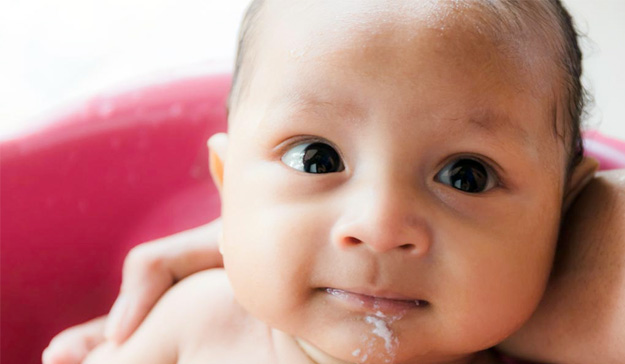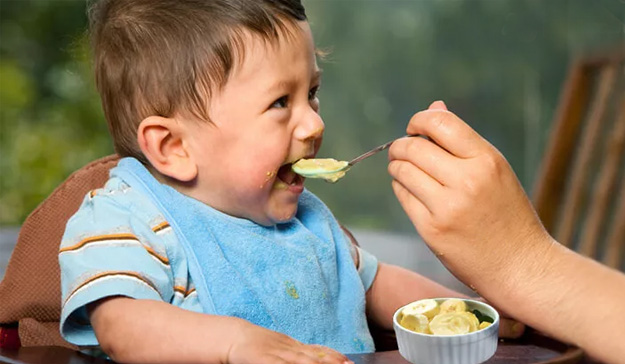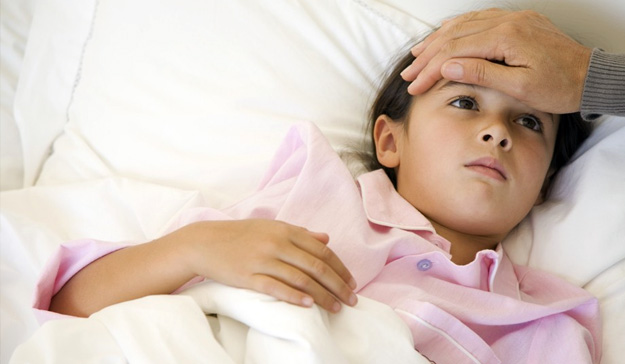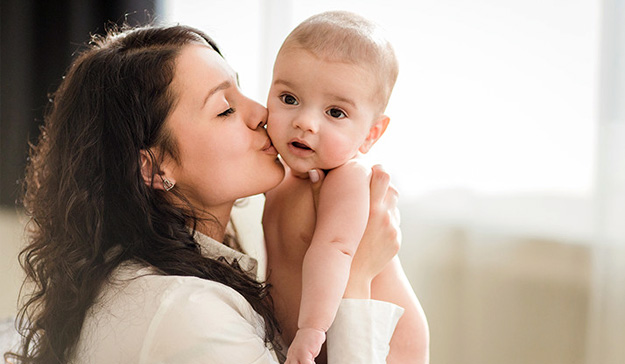Common Neonatal Problem FAQ's

What are the signs of cord infection?
If the cord gets infected, it looks damp or wet. The skin around the base of the cord may become red and some-times pus may be seen there. A baby with infection of the cord requires treatment and must be shown to a doctor. If the treatment is delayed, the baby may develop additional features like fever, lethargy or poor feeding. These signs indicate that the infection is spreading to the rest of the body as well. Early treatment of cord infection prevents spread of infection to the rest of the body, a serious illness in a newborn baby.
What are the important points to be kept in mind for home care of premature or low birth babies (LBW)?
Any baby who is born before completing 37 weeks of gestation or has a weight less than 2 kg, requires special care. This baby must be shown to a doctor who will decide if the baby can be treated at home or requires to be admitted for medical supervision.
The key issues in home care of premature/ low birth weight babies include:
1) Feeding: Breast milk is ideal for these babies. Milk of a mother with a premature baby is specially suited to meet the requirements of the premature baby. Most low birth weight babies and premature infants born after 34-35 weeks of gestation can suckle at the breast effectively. They may however get tired easily by the effort involve in sucking. Therefore, they need to be fed for a longer duration at each feed. If a baby cannot suckle effectively at the breast or gets tired easily, they can be offered expressed breast milk with a cup and spoon. If that is also difficult, then these babies need to be admitted since they may require to be given feeds using tube feeding technique under medical supervision.
2) Temperature Regulation: Low birth weight infants are more prone to develop hypothermia. Thus they need to be kept covered with warm clothes even more carefully, taking care to keep the feet and head covered. Touching the feet of the baby gives a good idea about his temperature. As a rule, the feet should be pink in color and feel warm to touch. If the feet are turning blue or feel cold to touch, the baby needs more warmth. This can be done if the mother holds the baby close to her body so that her body heat warms the baby. Heaters can be used to increase the room temperature taking care they are kept at a safe distance.
3) A LBW infant can catch infection more easily than other babies. Hands must be washed before touching or feeding the baby and handling the baby by visitors should be restricted to a minimum. If the baby develops signs of sickness he should be promptly shown to a doctor. These signs are discussed in a separate section.
What is the cause of vomiting in neonates?
A large number of babies vomit on the first day of life due to irritation of stomach by swallowed amniotic fluid. Vomiting/ regurgitation after feeds is also very common and is due to ingestion of air during feeding. The milk brought out is usually small in amount and is curdled. The baby continues to gain weight adequately. The regurgitation of milk can be prevented by use of proper feeding position by mother and burping the baby for 10 to 15 minutes after each feed. This helps in bringing out the swallowed air. Burping is done by tapping on the back keeping her/him in upright position on the lap.
If the vomiting is persistent, projectile, yellow/green colored or is interfering with weight gain, the baby needs to be evaluated by a doctor.
Why do babies cry?
The babies usually cry when they are hungry or in discomfort. This may be due to an unpleasant sensation of full bladder before passing urine, painful evacuation of hard stools, tight fitting clothes or mere soiling by urine and stools. Some times they just want to be picked up. Many babies are irritable when sleepy.The spells of crying unrelieved by feeding, changing the soiled napkins or by rocking the baby may be due to abdominal pain.
Excessive, inconsolable cry may be a sign of a medical problem in a baby and must be shown to the doctor.
How should a nappy rash be treated?
A rash on the buttocks usually results from maceration of skin due to prolonged wetness. Use of plastic nappies and delay in changing nappies is a common cause of nappy rash. The buttocks should be cleaned gently with wet cotton, allowed to dry and exposed to air for at-least some time during the day. Local application of coconut oil helps in healing. A rash that does not respond to these measures needs to be shown to a doctor.
Do all new born babies get jaundice?
Many newborns who are otherwise normal develop yellow colour of their skin (jaundice) after the first day. This is called physiological jaundice. It appears on the second day, reaches a peak on the 4th or 5th day and then disappears by 7th or 8th day.
If the baby has jaundice that appears within 24 hours of birth, persists beyond 14 days of life, or is deep, involving abdomen, palms and soles, he must be shown to a doctor. Mild neonatal jaundice can be treated by exposing the baby to sunlight in the morning or evening hours.
What are the signs of serious sickness in a neonate?
A baby who is feeding well on the breast and has warm and pink palms and soles is a healthy baby. The following are the danger signs in neonates:
• Fever/ feels cold to touch despite adequate clothing and warm environment
• Loose stools
• Abnormal movements suggestive of convulsions
• Continuous crying
• Cough/breathing difficulty
• Irritability
• Lethargy
• Inability to feed
• Persistent vomiting
• Abdominal distension
• Pus from ears/ umbilical stump/ boils over skin
A baby with any of these signs must be shown to a doctor without delay.
Common Feeding Problem FAQ's

How can sore nipples in the mother caused due to lactation be managed?
Soreness of nipples results most often due to incorrect position of holding the baby while breast feeding. If baby is not held very close to the mother, he pulls at the nipple while feeding. Feeding the baby in correct position, i.e. holding him close to the mother’s body prevents sore nipples. In this position the baby’s gums press upon the areola which facilitates the release of milk.
If you develop sore nipples, continue to breast feed in proper position and apply some simple cream around the areola at the end of feeding. Applying your own hind milk (milk expressed from a nearly empty breast) is equally effective since it is rich in fat.
Do not use plastic lined nursing pads since they hold the moisture. Avoid frequent washing of nipples with soap. If nursing the baby is very painful, express the milk from that breast manually and feed the baby using a cup and spoon till the nipple heals. Continue to feed from the other breast.
How should engorged breasts be managed?
Sometimes the breasts get swollen due to milk collection. This usually occurs around the 3rd day after delivery. It is more likely to occur if baby has not been breast feeding. The breasts feel heavy and painful. The breast engorgement is best prevented by early feeding and frequent suckling of the baby. If engorgement continues, the baby may not be able to attach to the breast. In that situation, some milk can be manually expressed and collected in a clean container. The baby can then be put to breast for feeding. If baby is not in a position to suck (for example a very LBW baby), the expressed milk can be fed to the baby using a spoon/ tube feeding. Hot fomentation relieves pain and facilitates manual expression of breast milk.
What should be done if the mother has small nipples that a baby cannot take in his mouth?
Many women with first baby have small nipples. Sometimes these nipples are not projectile and are buried inside the surrounding areola. It is difficult for a baby to hold such a nipple in his mouth and breast feed. The mother should pull her nipple out and roll it using her thumb and index finger. She should then put the baby to breast immediately thereafter. A few attempts may be needed before baby can hold on to the nipple. The problem resolves in most situations once baby feeds from the breast following this maneuver for a few times since suckling itself would help in bringing out the nipple.
Common Childhood Problems FAQ's

How can accidents to children be avoided?
Accidents are very likely to occur in young children as they attain mobility, learn to reach out for objects and climb, due to a natural desire to learn and explore and an inability to know from experience the consequences of what they are doing.
The common household accidents involving young children include falls, cuts, burns/scalds, electric shocks, near drowning and poisoning due to ingestion of chemicals/drugs.
It is vital to safe-guard your child against these accidents. Some of the important precautions includes:
Keep the doors leading outside the home and the stairway firmly latched.
Ensure that the open areas like the balcony and the lawn have a railing through which child cannot get out, at the same time there is no danger of his hand/ limbs getting stuck.
• The windows should be safe so that a child cannot jump out of them.
• The infant’s cot should have bars all around, and when the child is old enough to climb over them, he should be using a bed.
• Keep all sharp instruments like knives, scissors, needles etc out of children’s reach.
• Match-boxes, gas stoves, heaters, electric iron etc should be kept out of children’s reach to avoid fire accidents.
• All unused electricity/power points should be covered. Children have a strong tendency to poke in a finger in the sockets!
• To avoid accidental poisonings, keep bottles of all medicines, insecticides, domestic toilet cleaning solutions, kerosene oil, mosquito repellants etc firmly closed and out of children’s reach.
• Children’s toys or clothes should not have loose small parts that can come off easily. The children tend to put these in their mouth and swallow. Likewise, keep small objects like coins, beads etc out of their reach. Children are known to suffocate even while playing with polythene bags!
• Never leave a child alone in the bathroom or leave a bucket of water lying on the floor when the baby is around.
• A young child never be left unattended when outside the home. Due to their natural curiosity and inexperience they are at a high risk of accidents in water-pools, staircases,
• falling from terraces, shocks from electric appliances etc.
What should be the home management of a child with diarrhoea?
A child has diarrhea when there is a change from normal bowel habits to more frequent and looser or watery stools. The stools are often foul smelling. During the diarrhoeal episodes the baby becomes sick, irritable and/or lethargic. Most diarrhoeas are self limiting and last for 2-3 days.
The key point in home management of a child with diarrhoea is replacing the fluid losses with oral liquids. This should be started as soon as the child develops diarrhea. He should be given increased amount of fluids normally given at home like lemon water, coconut water, soup, daal water, butter milk etc. Breast-fed infants should be offered breast milk more frequently. He can also be given Oral Rehydration Solution. Oral Rehydration Solution or ORS is a life saving medicine to cure and prevent dehydration. It is readily available at all health facilities. One packet of WHO ORS is dissolved in 1 liter of clean potable water. ORS can be given as small frequent sips. A child who is losing fluids due to diarrhoea will accept ORS readily.
Most children with diarrhoea do not require any other medication. Consult a doctor if a child develops any of the danger signs listed below.
What are the danger signs of diarrhea?
The major concern in diarrhoea is rapid fluid loss resulting in dehydration. To prevent this serious side effect it is important to replace lost water and electrolytes at the earliest. Any significant dehydration constitutes an emergency, so be aware of the following signs:
• Excessive thirst/ irritability
• Dry lips, tongue and skin
• Decreased amount of urine
• Very frequent passage of watery stools
• Lethargy or poor oral acceptance of fluids
• A child with any of the above signs should be shown to a doctor without delay.
Consult the doctor also if the child has blood in his stools. This is dysentery and child requires to be given medicines for this.
How can diarrhoea be prevented?
Diarrhoea is an important cause of sickness in children. It can be prevented by simple measures like:
• Drinking clean drinking water
• Exclusive breast feedingfor first 6 months
• Avoiding using bottle for feeding the infant
•Frequently washing your own and the child’s hands, specially on cleaning the child after he has passed stools
• Keeping food articles covered.
• Giving only freshly prepared food to the child. Any food that is left over from a previous meal should not be given to the child again at the next meal
• Avoiding consuming food prepared and served in unhygienic conditions
Is it a right practice to stop breast feed if a baby has diarrhea?
No, breast feed should not be stopped during the diarrhoeal episode. Breast milk prevents dehydration and maintains nutrition when the child suffers from diarrhoea. In fact, during diarrhoea the baby should be fed more often than usual.
The older infants and children who eat solid foods, should also continue to be fed as usual. Banana, curd, khichri etc. are good foodsto be given during the diarrhoeal episodes.
Which children with cough and cold should be shown to a doctor?
Cough and Cold are among the most common problems of childhood. Often, these are accompanied by fever. Most common cause of cough and cold in children is viral infection. These are mild, self-limiting illnesses that improve over a few days. The child remains alert, active and continues to accept food, though sometimes the appetite may be reduced. These mild episodes respond well to paracetamol (if there is fever), and home remedies like ginger with honey.
If the child remains sick beyond 2-3 days, “looks sick” and is not feeding well, a he should be shown to a doctor. If a child younger than 2 months of age has cough, he should be shown to a doctor without delay since these children can become sicker rapidly.
Sometimes, the child develops more severe form of illness that is called pneumonia. In pneumonia a child breathes faster than normal and parents may notice that the child is having difficulty in breathing. Some times an audible sound may be heard when the child breathes. A child with severe pneumonia may also become lethargic and develop difficulty in feeding. A child with any of the above signs must be promptly shown to a doctor.
What are the signs of serious illness in an infant/young child?
A very sick child may have one or more of the following features:
• Not able to feed
• Abnormally sleepy or difficult to awake (lethargic)
• Fast breathing
• Convulsions
• Vomiting every thing taken
A child with any of these symptoms should be shown to a doctor without delay.
Care of Young Child FAQ's

How do I know that my child is growing normally?
A serial record of height and weight of a child is the best way of knowing that a child is growing well. This can be done by maintaining a growth chart. A growth chart for children upto 2-3 years of age shows a serially maintained record of a child’s weight, length and head size (circumference) in comparison with the normal range for the child’s age and sex. For a child older than 2 years growth charts show serial recordings of child’s height and weight.
Since a child grows very fast during first two years of life, his growth should be assessed at every opportunity. This is done conveniently during the visits for routine immunisation. and other visits to the doctor. Thus, during the first year, it is recommended that a child’s growth is assessed at birth, at 6, 10, 14 weeks and 9 months (coinciding with visits for immunisation). A 3 monthly record during the first two years is ideal. Subsequently, since the rate of growth slows, measurement of weight and height taken twice during an year and duly recorded on the growth chart suffice to give a good indication about the child’s growth.
It is important to realise that there is a wide range of weight and height that is considered normal for children of same age. Some children are genetically and constitutionally shorter or lighter, while others are taller/ heavier. However, the rate of growth of all healthy children at various ages is similar. If the rate of growth is slower than expected for age, the child needs to be evaluated by a doctor. A well maintained growth chart helps in early detection of growth faltering.
When will my baby’s first tooth appear?
Teething usually starts around five months and continues until the end of the second year. However, the order in which the teeth appear remains unchanged. Lower front teeth begin to appear by the age of 5 to 8 months. Upper front teeth begin to appear at the age of 8 to 12 months.
What precautions should be taken while the baby is teething?
Teething is a normal phenomenon. During this time babies may feel some irritation in their gums. They may try to put whatever objects they lay their hands on in their mouth to relieve this irritation. This can lead to infection, diarrhoea or fever. Therefore, all the objects that the baby is likely to handle should be washed and cleaned several times a day. A clean and safe teether can also be used to pacify the baby. Baby’s nails should be clipped and hands washed several times a day. A baby does not require any drugs/ supplements during this period.
What are developmental milestones?
Milestones are punctuations in a baby's growth and development. These milestones provide a guide to parents telling them what to expect from the baby and when to expect it.
The sequence of development is same for all children, but the rate of development varies from child to child. For example one child can learn to walk independently as early as 10 months of age, while the other might be able to do so at 15 months. This is the normal range for achievement of this milestone. However, a child has to learn to sit before he can walk, and to hold his neck before he can sit. Since there is a range of period that is considered normal for achievement of a milestone, departures from the norm should not be a reason for undue panic unless confirmed by expert medical opinion.
What are some of the important milestones?
Some important development milestones of a child and the usual time of appearance are as follows:
• Smiling when “talked to”- 2 months
• Neck holding – 3 months
• Recognizes mother – 3 months
• Reaches out for an object and holds it in his hand – 5 months
• Making sounds like ‘ma’ ‘ba’etc-6 months
• Sitting without support- 8 months
• Crawling- 11 months
• Standing without support-1 year
• Speaks two words with meaning – 1 year
• Walking with support – 13 months
• Walks upstairs-24 months
• Makes simple sentences – 24 months
How can I know that my child is having a normal vision?
A young infant would watch his mothers face intently by 4 weeks of age and smiles in response to his mother’s gestures by 6-7 weeks of age. Achievement of these milestones indicates that a child has normal vision. A lack of fixation of vision and social smile by 8 weeks should prompt an evaluation by a doctor. Visual defect in an older child can be suspected if your child keeps bumping into the furniture or has trouble following the trajectory of a ball thrown to his/her. Changes in the appearance of the eyes, such as a lazy eye, drooping eyelid or a squint should also be evaluated by a doctor.
Why do some children speak later than others?
There is a lot of variation in development of speech. Many children, who are other-wise completely normal, learn to speak late. Lack of environmental stimulation is a common cause of delayed speaking. The more the child is ‘talked to”, earlier he will learn to speak.
An important cause for delayed speech is poor hearing. Therefore, a child who has not started making any vocal sounds by 5-6 months of age or does not speak any word with meaning by 18 months of age should be evaluated by a doctor.
What is complementary feeding and when should it be started?
Complementary feeding refers to adding semi-solid foods to an infant’s diet who has, so far been accustomed to mother’s milk only. Exclusive breast feeding should be carried out until 6 months of age. After 6 months breast feed is not adequate to meet the nutritional requirement of baby. Hence, he/she should be gradually introduced to semi solid and later to solid food.
Should breast feeding be discontinued after the introduction of complementary feeding?
No, breast feeding should be continued even after starting a solid diet. Babies should be breastfeed as log as possible, even up to 2 years of age and beyond. However, it should be kept in mind that as the child grows older, he receives more and more of his nutritional requirements from other foods. Breast milk increasingly supplements the other foods, rather than be the main source of nourishment.
What are the common complementary foods suitable for an infant?
The choice of complementary food should be decided in cultural and social context. It should be soft, freshly prepared, hygienic and offered in a mashed/ homogenised form to a young infant accustomed only to the milk. While many ready made semisolid foods for infants are available commercially, mothers can prepare healthy food suitable for the baby with resources readily available at home. Most of the packaged foods are much more expensive, and do not offer any advantage over home cooked foods.
Examples of complimentary foods include suji (semolina) cooked in milk, mashed daal, khichdi, thick stew made from boiled and blended rice, pulses and seasonal vegetables, mashed bananas etc.
What are the guidelines for feeding infants upto 1 year of age?
Once a baby completes 6 months of age, complementary foods should be introduced one at a time. In the beginning, offer a small quantity, say a spoonful or two once a day. Over the next few days, gradually increase the quantity till it can replace a milk feed (roughly 1 katori serving). Introduce another food and gradually increase its quantity in a similar manner. Avoid introducing too many foods at the same time, letting the baby develop a taste for one food at a time. As the child starts teething and gets used to the new food consistency, start chopping the soft food in small pieces rather than mashing it completely. Now the baby can have rice mixed with dal, chapati soaked in dal/vegetables etc. by the time a child is one year old, he should be able to have most foods cooked at home. Usually, a breast fed baby should get at least 3 servings of semi-solid food, about 1 katori serving each by one year of age. The mother should take care to wash her hands and feed the child herself.
What are the guidelines for feeding a child older that 1 year?
During this time, a child should be eating every thing cooked at home. The serving size can be increased upto 11/2 katori each and atleast 5 servings should be offered. Introduce a variety in child’s food which should include cereals, pulses, fresh vegetables and fruits, milk and milk products. A little oil/butter can be added to increase the energy content of foods. The child should be given his own separate plate. As the child grows older, he should be encouraged to eat on his own, though the mother should sit with the child and help him eat. This does not mean forcing a child to eat. Rather, the child should be allowed to develop his own sense of satiety and this should be respected.
A child beyond two years of age should have 3 main meals along with the rest of the family with 2-3 mid-meal snacks which could include milk, fruits, biscuits etc.
What can be the causes of food refusal when complementary foods are being introduced?
The child can refuse to take food during weaning period due to:
• He/she is not hungry
• He/she is tired, sleepy or interested in playing at that time
• Dislikes the food being offered
• The child is being rushed because of time constrains
• He/she is uncomfortable because of a wet nappy.
• The food is too hot or remembers a previous food which was too hot.
A child should never be force-fed. Try to find the cause of food refusal and act accordingly. Mother should learn to recognize & respond to signs of hunger in the child. The meal times should be pleasant for the entire family rather than a source of anxiety for the mother & child.
Why is immunization needed?
Immunization is one of the most important and cost effective way of protecting children against common childhood illnesses many of which can be potentially serious, even life threatening. The illnesses against which vaccination is being offered free of cost by the Government of India include tuberculosis, diptheria, whooping cough, tetanus, polio and measles. Many States also offer free vaccination against hepatitis B , mumps & rubella. These vaccines are available at various Government Hospitals, Dispensaries & Health Centers. Vaccination is also available against other diseases like chicken pox, typhoid fever, hepatitis A, H influenzae infection etc. These are however not currently being provided by the Government. These can be taken from private Hospitals/ Clinics as per the advice of the Pediatrician.
Can immnisation be given when a child is sick?
A child with minor illnesses like common cold, cough, fever, passage of a few loose stools etc can be immunised safely without any complications. It is important that delay in immunisation be avoided as far as possible since it leaves a child susceptible to more serious infections. However, immunisation should be postponed if a child is suffering from a serious illness as determined by a doctor. At that time it is important to treat the child for his/her sickness. Immunisation should be done on recovery.
What are the side- effects of immunisation?
Most immunisaions are free of side-effects. If present, side effect are minor and transient in nature. The DPT vaccine is the most common vaccine associated with side-effects. These include pain and swelling at the site of injection and fever in some infants. These last for a few hours to a day or so. One or two doses of paracetamol are adequate in controlling these symptoms. Very very rarely an infant may develop persistent uncontrollable screaming or convulsions folowing DPT. These should be brought to the notice of doctor who would suggest modification in further immunisation schedule.
The BCG vaccine is followed by development of a small nodule at the site of injection after 2-3 weeks which may become pus filled and later form a shallow ulcer. This heals on its own, usually by 10-12 weeks after injection. This is a normal reaction to BCG vaccine and indicates that the vaccine is working.
What should be done if the immunisation gets delayed beyond the recommended schedule?
While every effort should be made to immunise the children as per schedule, delays may occur due to unavoidable circumstances. In such a situation the entire schedule need not be started again since the vaccines received earlier shall still be effective. The remaining vaccines should be given to complete the schedule as soon as possible.
What kind of toys should my child play with?
Toys are important tools that facilitate a child’s development. The toys have to be age appropriate and need not be expensive. A child as young as 2 months of age enjoys watching a rattle, colorful balls etc. By 4-5 months he can hold a rattle and play. A one year old can put things in and out of a basket and enjoys playing with stacking toys like beakers, rings etc. Even a cup & spoon can provide entertainment to a young child while improving his hand coordination. Beyond 1 year of age, pull-along toys are enjoyed by children and so are picture books.
An important consideration while choosing toys for children is that they are safe Since children tend to take the toys to their mouth. Very often colors used in the toys may be toxic to children. Toys with small loose parts that may come off like a whistle, beads etc are not safe for children. The toys should be washable so that they can be cleaned frequently.




